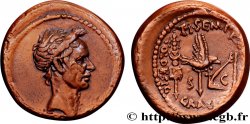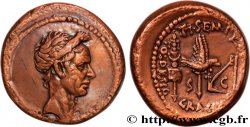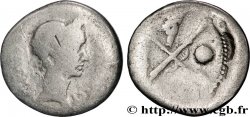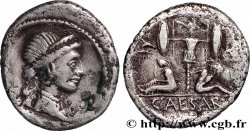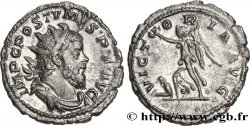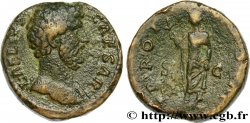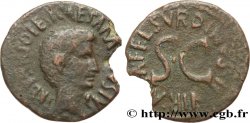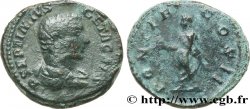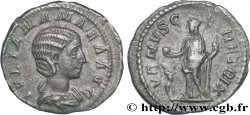Live auction - brm_1016720 - GIULIO CAESAR Denier
Devi Sign-in ed essere un offerente approvato fare un'offerta, Login per fare offerte. Conti sono soggetti ad approvazione e di approvazione sono raggiunti entro 48 ore. Non aspettare fino al giorno di una vendita si chiude per registrarti.Confermando la tua offerta su questo oggetto ti impegni ad un contratto legalmente vincolante per l'acquisto di questo prodotto e fare clic su «offerta» costituisce accettazione dei termini di utilizzo de live auctions cgb.fr.
Offerta deve essere collocato in euro gli importi interi vendita only.The si chiuderà al momento sulla descrizione dell'oggetto, eventuali offerte pervenute al sito dopo l'orario di chiusura non verranno eseguite. Volte transmition possono variare e le offerte potrebbero essere respinto se si attende per gli ultimi secondi. Per ulteriori informazioni ckeck le FAQ Live auction.
Le offerte vincenti saranno sottomesse ai 18% per spese di compartecipazione alla vendita.
Le offerte vincenti saranno sottomesse ai 18% per spese di compartecipazione alla vendita.
| Valutazione : | 2 000 € |
| Prezzo : | 1 250 € |
| Offerta maxima : | 1 250 € |
| Data di fine vendita : | 03 giugno 2025 14:40:02 |
| partecipanti : | 2 partecipanti |
Tipo : Denier
Data: 49 AC.
Nome della officina / città: Gaule ou Italie
Metallo : argento
Titolo in millesimi : 950 ‰
Diametro : 17,5 mm
Asse di coniazione : 3 h.
Peso : 3,85 g.
Grado di rarità : R1
Commenti sullo stato di conservazione:
Superbe exemplaire sur un flan légèrement décentré au revers. Magnifique éléphant. Patine grise avec de légers reflets bleutés et dorés
N° nelle opere di riferimento :
Diritto
Titolatura diritto : CAESAR À L'EXERGUE.
Descrittivo diritto : Éléphant passant à droite ; à ses pieds, un serpent (ou carnyx, trompette gauloise).
Traduzione diritto : “Cæsar”, (César).
Rovescio
Titolatura rovescio : ANÉPIGRAPHE.
Descrittivo rovescio : Instruments pontificaux : simpulum, aspersoir, hache à sacrifice, chapeau à sacrifice.
Commento
Contremarque au droit. Monnaie fourrée. Pour ce type, M. Crawford a relevé une estimation de 750 coins de droit et de 833 coins de revers, représentant une production qui pourrait avoisiner les deux à quatre millions de deniers. Pendant très longtemps, on pensa que ce denier avait été frappé par César pendant la Guerre des Gaules entre 58 et 52 avant J.-C., en Gaule même. En fait, il fut fabriqué au début des Guerres Civiles. Il a été imité servilement par les Trévires avec le bronze HIRTIVS (LT. 9235), fortement romanisé.
Countermark on the obverse. Filled coin. For this type, Mr. Crawford noted an estimate of 750 obverse dies and 833 reverse dies, representing a production that could be around two to four million denarii. For a very long time, it was thought that this denarius had been struck by Caesar during the Gallic Wars between 58 and 52 BC, in Gaul itself. In fact, it was made at the beginning of the Civil Wars. It was slavishly imitated by the Treveri with the bronze HIRTIVS (LT. 9235), heavily Romanized
Countermark on the obverse. Filled coin. For this type, Mr. Crawford noted an estimate of 750 obverse dies and 833 reverse dies, representing a production that could be around two to four million denarii. For a very long time, it was thought that this denarius had been struck by Caesar during the Gallic Wars between 58 and 52 BC, in Gaul itself. In fact, it was made at the beginning of the Civil Wars. It was slavishly imitated by the Treveri with the bronze HIRTIVS (LT. 9235), heavily Romanized








 Segnalare un errore
Segnalare un errore Stampate la pagina
Stampate la pagina Condividi mia selezione
Condividi mia selezione Fai una domanda
Fai una domanda Consegnare / vendere
Consegnare / vendere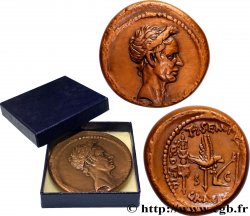
 Descrittivo
Descrittivo